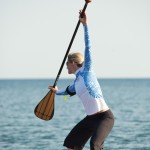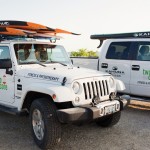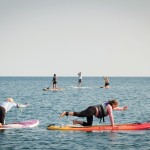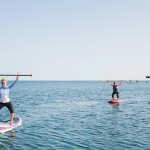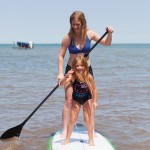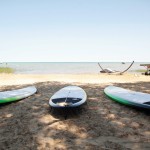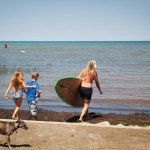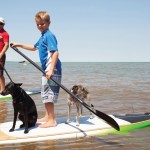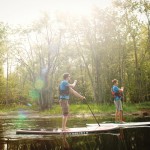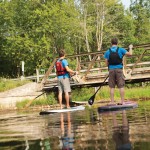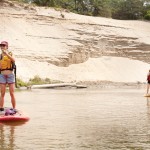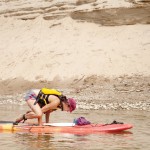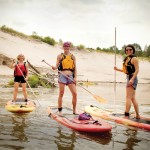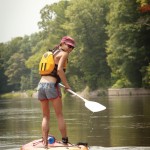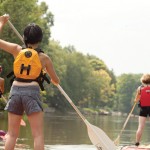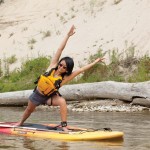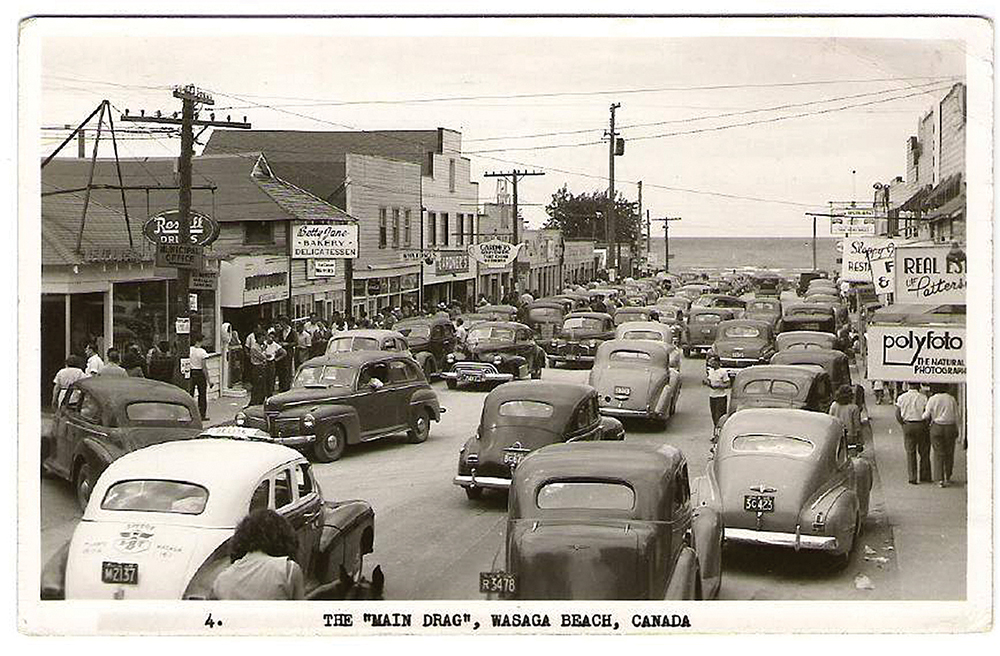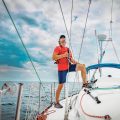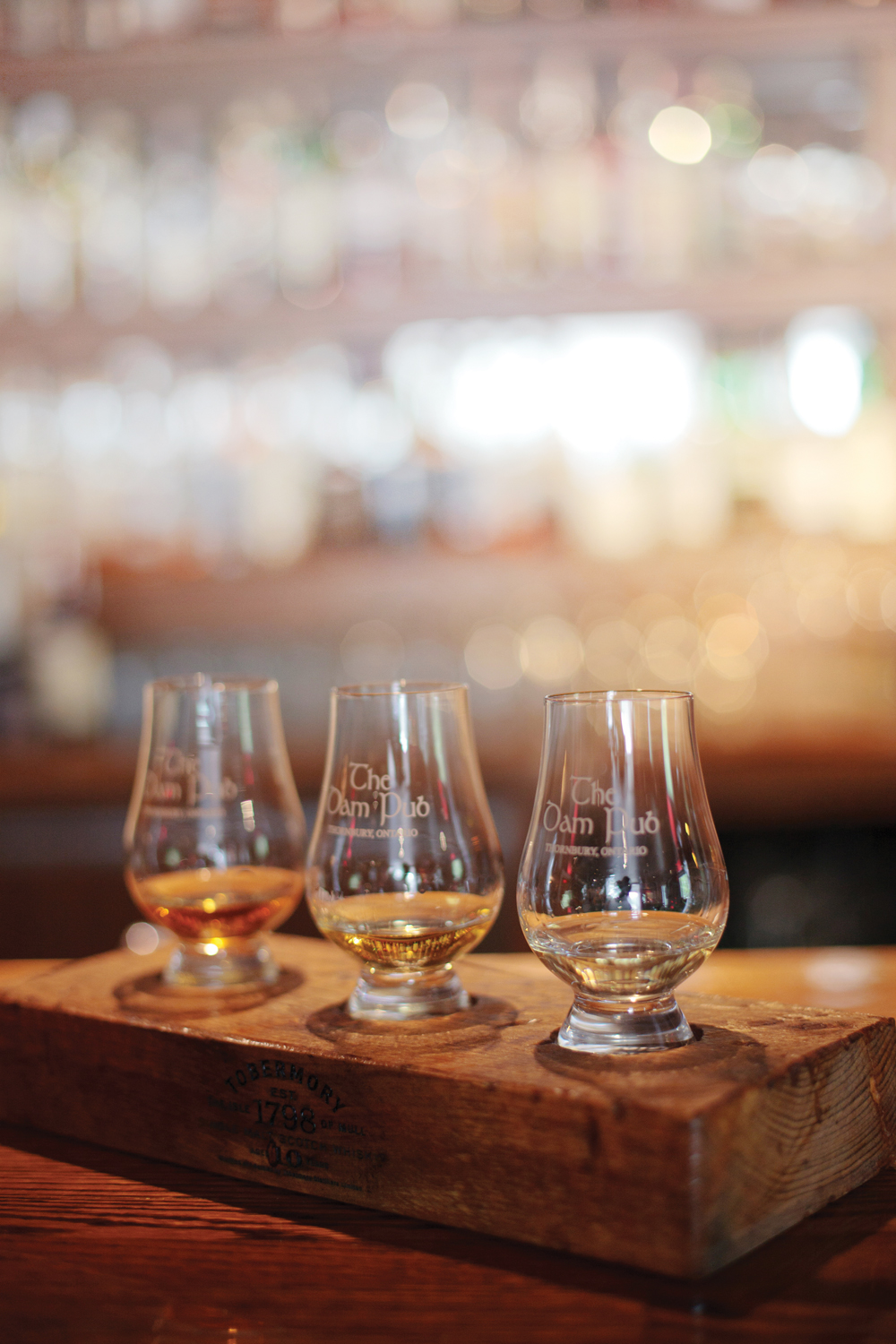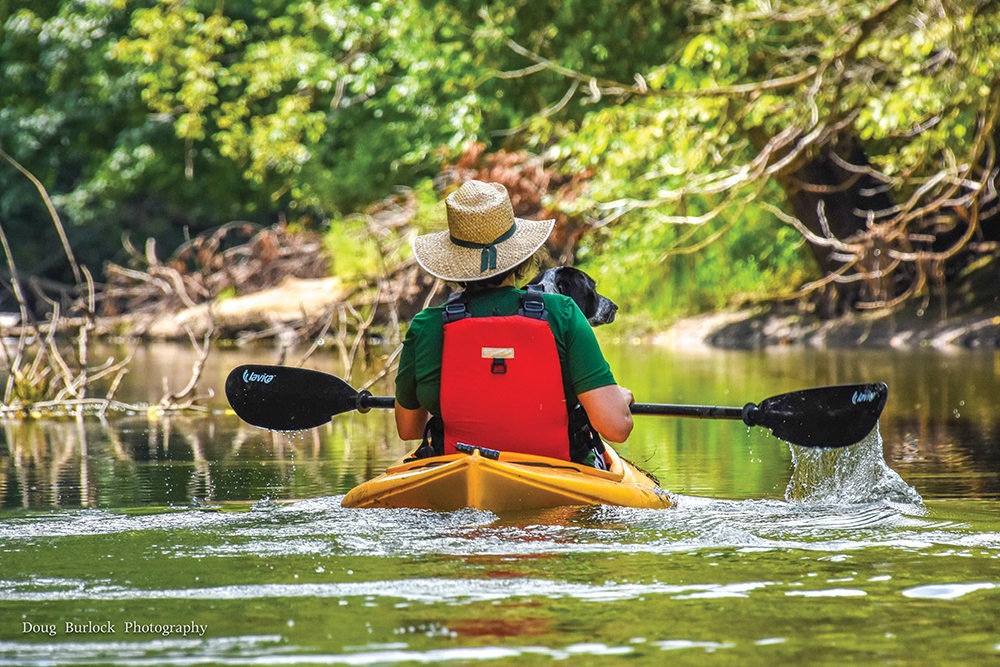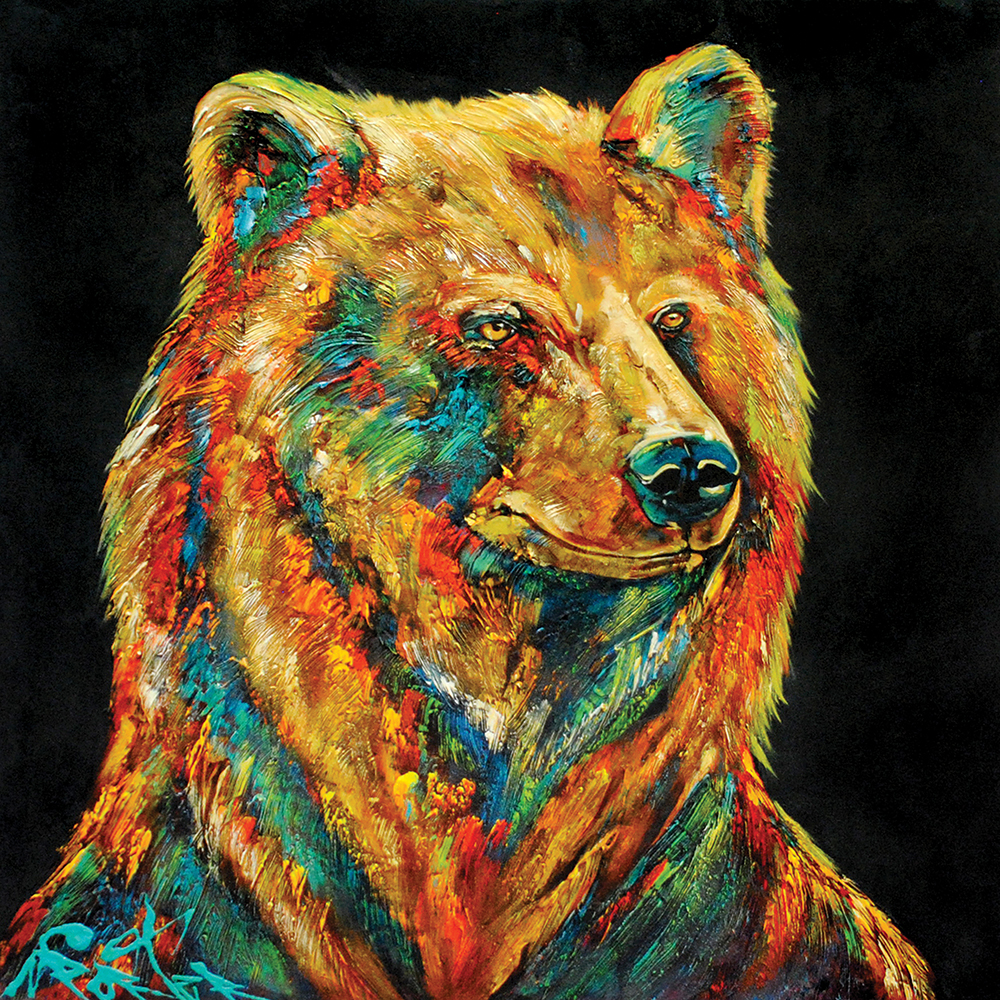SUPing … the watersport that’s making a big splash
story by Judy Ross ❧ photography by Kristie & Brenden Woods

SUPing or ‘stand up paddleboarding’ is the latest, and many say the greatest, watersport to come along in ages. It’s an activity that’s easy to learn, isn’t costly and requires minimal equipment. If you have access to water, you can do it. Or, as the pros like to say, “if you can walk, you can SUP.” Plus, it provides a full body workout and is guaranteed to improve your balance, tighten your core and soothe your soul. What’s not to like about that?
Every decade or so a new sport comes along that involves being on water. In the 1970s windsurfing was the hot new activity, a fun if challenging sport that involved both a sail and a surfboard. When that became less popular, something even more difficult took its place: kitesurfing, which allowed boarders to take off across the waves at lightning speed, propelled by the wind and a large controllable power kite. But both these watersports required the perfect wind conditions, an ideal waterfront setting, consistent waves and a good deal of strength and athleticism. The time had come for a water board sport that was easier, more user-friendly and could take place in flat water on windless days. Meeting all these criteria, the hugely popular ‘stand-up paddleboard’ has become the best new thing in watersports.
HOW IT STARTED
It was in the early 2000s in Hawaii that SUPing first made an appearance as an off-shoot of surfing. It caught on there because it allowed surfers to paddle out and get a better view of the incoming swells, and therefore catch more waves in a set. It wasn’t until several years later that the sport began taking off in other regions. Here in the Georgian Bay area, it is one of the fastest growing summer activities on the water. And because we have a choice of rivers as well as the long, extended shoreline of Georgian Bay, there are plenty of places to slide a board into the water.
“It’s a sport that you can catch onto quickly,” notes Jennie Elmslie of Free Spirit Tours; “it’s really fun right from the get-go.” Her company offers SUP boarding tours and lessons on the Nottawasaga River, the Beaver River and at Wasaga Beach. “This summer we have our SUP guru Tim Sproll giving lessons at Beach 3 in Wasaga,” adds Elmslie, “and it is the perfect place to learn.”
Sproll agrees, enthusing, “Wasaga Beach is like paradise for SUPing.” The water at the beach is clean and clear, and because it’s shallow for such a long way out it’s easy to learn there. If you fall off you’re still only up to your waist and yet you can get far enough out to be away from the swimmers and waders. Also the view of the Escarpment is breathtaking from that vantage point. According to Sproll it takes most people just an hour or two to master the basics (he offers an 1-1/2 hour introduction class) and then you can paddle off on your own or join in the social paddles that take place all along the waterfront in the summer.
Sproll’s interest in the sport began in 2007 when he first saw someone on a board in Australia and wondered then “why is this guy standing on his surfboard and paddling?” A few years later he tried SUPing in Toronto and has been passionate about it ever since, even taking part in a charity event on Lake Ontario where he paddled 18 kilometres from Bluffer’s Beach in Toronto to Frenchman’s Bay in Pickering. He has now moved to Wasaga Beach to become more involved in the sport. “I’ve always had an affinity for anything in or on water,” he says, “and SUPing in this area offers the best of all worlds.”
GOOD FOR THE BODY
“You feel like a little kid playing on the water,” offers Sarah Bright, a partner with Robyn Allen in Two The Core, a fitness studio and store in Thornbury. “But at the same time you’re getting an amazing workout.” Bright started doing fitness on SUP boards four years ago and has been impressed with what a great core workout it provides. “When you’re standing with your feet grounded on the board your abdominal muscles kick in automatically. It’s a great strengthener for pelvic floor and core … and good for balance, too.” Bright has witnessed that it’s also a fun way to lose weight. “One guy I know went out on his SUP two or three times a week all summer and lost 30 pounds.”
GOOD FOR THE SOUL
Just being on water is a natural mood booster, and paddling a SUP is as close as we can get to walking on water. With a board’s-eye view you can see things you’ve never seen before. “It gives you a great perspective,” says Matt Bartol, who owns Blue Surf, a watersports store at Craigleith, “you can see down into the water, watch fish swimming by, even find things. I once found a wallet.”
He points out that paddling appeals to different personalities. Some people find it soothing to be alone on the water, while others like the social aspect. Because it’s a quiet endeavour you can paddle and chat at the same time, somewhat like biking. Social paddles, especially at sunset, are a popular way to enjoy the sport and to meet people as well.
A GREEN SPORT
Unlike some activities that take place on water, a SUP doesn’t need a motor or use gas, it’s not noisy and it doesn’t pollute. All of these are reasons that Jason Ruttan, who used to own a jet-ski rental business and a wakeboarding school, is now a fully committed SUPer. “I wanted to be involved in a more environmentally friendly activity,” says Ruttan, who now runs The SupHut at Wasaga Beach. He was the Ontario SUP Series champion in 2013 and his passion for paddling has taken him all over the world. “I’ve been to a lot of places but I think the Georgian Bay area is one of the best for SUPing because you can access the waterways so easily,” offers Ruttan, “you can always find a spot with protected flat water.” His suggestion for a soul-soothing outing is a paddle on the calm protected waters of the Nottawasaga River in the early morning “when it’s so peaceful and beautiful.”
In addition to being a relaxing experience, SUPing also appeals to adrenaline junkies, says Aaron Pilon, president and owner of Blu Wave Board Co., which recently relocated its distribution operations to Collingwood and in June opened a new SUP Academy at Cranberry Marina offering guided SUP tours of Collingwood harbour and out to the lighthouse, as well as sunset paddles, SUP yoga, rentals and lessons. “When the winds kick up, especially in the fall, you can do what’s called downwinding,” explains Pilon. “You shuttle everyone to a starting point – Thornbury, for example – and you paddle downwind and ride the swells and waves all the way to Collingwood. It’s pretty awesome, and the potential for downwinding in this area is tremendous.”
Adds Ruttan, “When you get a 30-kilometre-plus wind from the northwest you can go from Collingwood to Wasaga Beach with the wind at your back. It’s a great feeling; a real rush.”
RACING ON SUPS
Typically when athletes take up a new sport they look for ways to push the limits and make it competitive. The Ontario SUP Series provides a venue. Now in its fourth year, this travelling show – which features long distance and sprint races – will be in Collingwood harbour on August 1.
“We want to encourage the development of SUPing,” says race organizer Henry Haiduk, “so we’ll have sponsors there with demo boards and information.” At 74 years old, Haiduk is a great example of the phenomenon known as SUPing Seniors. He has been teaching windsurfing in this area for 40 years and has recently become an advocate for SUPing. “Anyone, senior or not, who is reasonably fit can enjoy this sport.” he explains with the zeal of a convert. “The learning curve is very short … that’s what’s so great about it.”
BUYING A BOARD
Equipment for SUPing is minimal, involving only a board with a leash and a paddle. “I like the simplicity of it,” says Matt Bartol, “there are no lift tickets, no green fees and it’s easy to put your board into the water anywhere and go for a paddle.”
Admittedly, as a former kite surfer, he first thought SUPing was going to be too boring; no adrenalin rush involved. But he changed his view when he realized what a good workout he was getting.
Bartol sells a range of SUP boards in his store as well as wetsuits and surf clothing. He points out the importance of getting the right fit. “It’s like buying a bike. You need to be sized. A lot depends on your balance, weight and athleticism. You don’t just go to Canadian Tire to buy a board if you’re serious about getting into SUPing.”
Anyone in the business will suggest taking a board out for a test drive before purchasing. For many buyers the intent is to get an all-purpose board for family use. A standard size of about 11 feet long, 32 inches wide and 25 pounds in weight will support a 200-pound adult or a 10-year-old child. Prices vary depending on the construction materials, but expect to pay about $1,000 for a good all-round board. Cheaper boards will be heavier. Boards come with a leash/leghold and a stand-up paddle (similar to a canoe paddle but longer).
There is increasing enthusiasm for Inflatable SUPs, or ISUPs, which are portable and compact (they come in a backpack) and can be easily stored. A regular hard board should be stored in a cool, dry place like a garage or shed so, for people with limited storage space, ISUPs are a good compromise. They can be transported anywhere without needing a car with a roof rack. A hand pump comes with them and a carbon fibre paddle that comes apart in three sections. When fully inflated these boards become rock hard, are very durable, and function just like a regular hard board. One caveat: hand pumping takes time and requires strength. Many folk with ISUPs end up investing in an electric pump.
SUPING SENIORS
“I fell in love with it immediately, and it has taken over from golf for me.“ says 68-year-old JoAnn Hamilton who discovered SUPing last summer. She first tried it at Deerhurst Resort near Huntsville, was instantly smitten and went shopping for a paddle board, one that she could lift onto the rack on top of her car. Finding lots of instruction online, she taught herself how to do it and now her favourite place to paddle is Beach 6 at Wasaga. “I have my whistle and my lifejacket and my husband is usually on the beach reading and keeping an eye on me.”
When paddlers get confident they begin to experiment, using their board for a variety of activities. Some take their dogs out for a paddle (SUP with your pup!); others take young kids or do yoga or pilates on their boards. Some boards are fitted with rod holders for fishing, some are glass-bottomed for underwater viewing. But the basic joy of being on a SUP is the kind of Zen-like feeling that occurs. “It is just so peaceful and relaxing,” says JoAnn Hamilton, “when I can’t get to sleep at night I imagine myself paddling and then I drift right off.”
As the popularity of SUPing increases among people of all ages, Blu Wave’s Aaron Pilon sees it outlasting short-lived fads such as windsurfing. “This area has the potential to be an amazing destination for the sport,” says Pilon. “It’s growing here, no doubt, and people are really interested in getting on the water and trying it out. The fitness element is the initial draw for a lot of people, then they see what a great therapeutic stress release activity it is. It’s easy, it’s very accessible, anyone can do it, the price of entry is pretty low, and it’s a lot of fun. That’s why it will continue to grow and be around forever.” ❧






